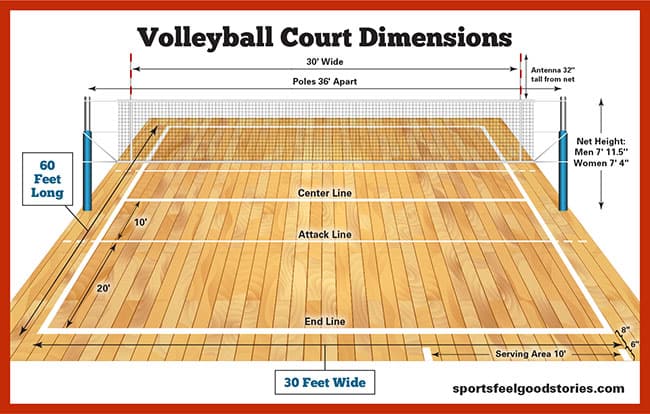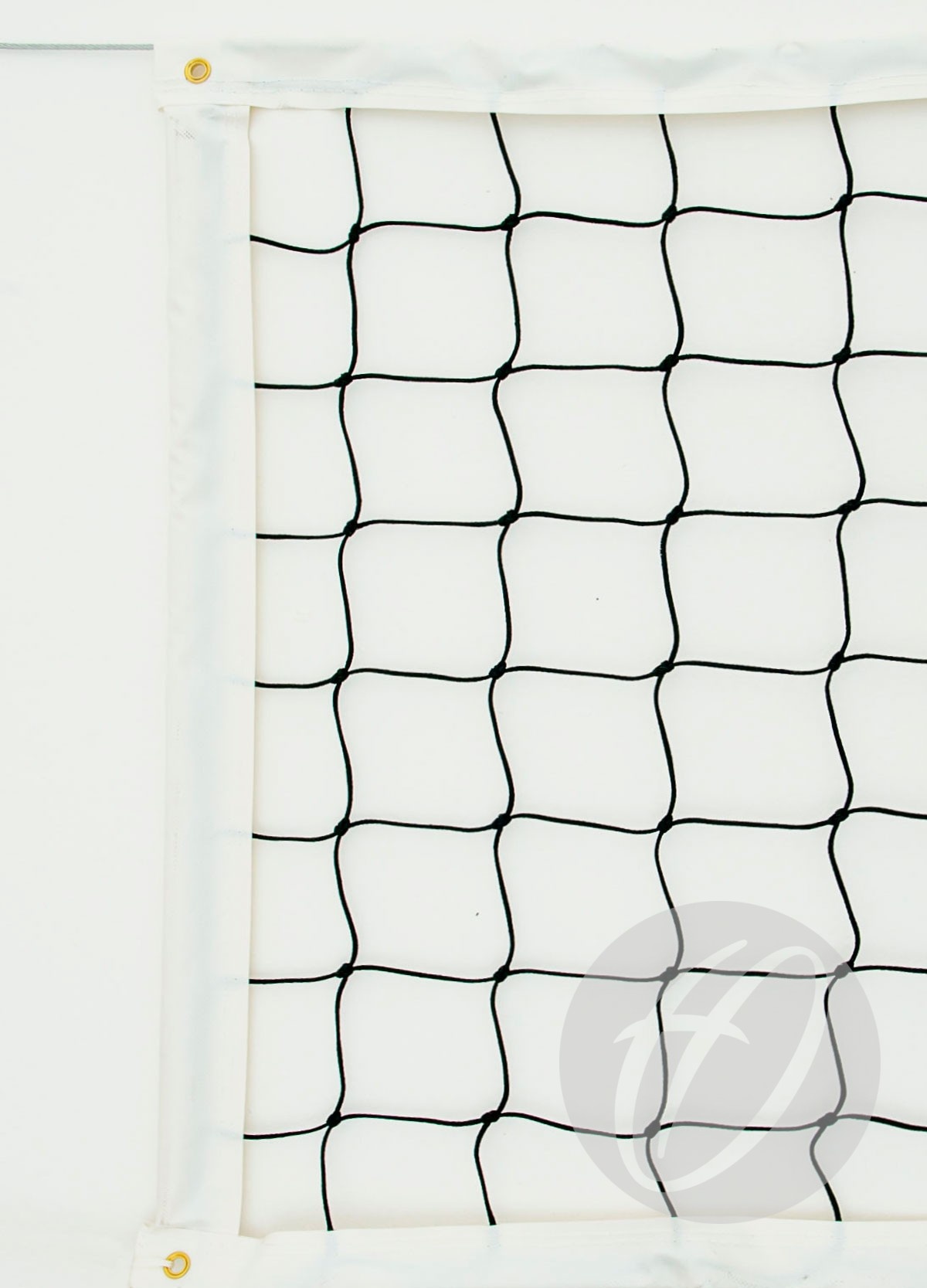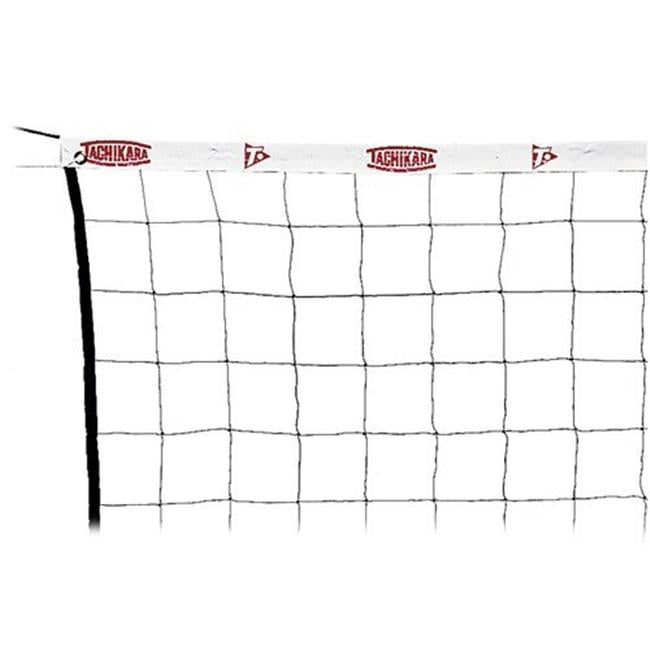Volleyball Net Regulation Size
1. Importance of Volleyball Net Regulations
Before we dive into the specifics, let's understand why adhering to volleyball net regulations is crucial. These regulations are established to create a level playing field for all participants, minimize unfair advantages, and ensure a standardized game.
2. Understanding the Volleyball Net Regulation Size
The official volleyball net regulation size, as dictated by the International Volleyball Federation (FIVB), is 2.43 meters (7 feet 11 5/8 inches) in height for men's competitions. For women's competitions, the net's height is slightly lower, at 2.24 meters (7 feet 4 1/8 inches).
When it comes to the width of the net, it must measure 9.5 meters (31 feet 2 inches). This measurement remains the same for both men's and women's competitions.
3. Factors to Consider for Proper Net Setup
While knowing the official net size is essential, it's equally important to consider other factors that contribute to a proper net setup.
3.1 Volleyball Net Tension
To ensure fair play, the volleyball net must be properly tensioned. Tensioning the net correctly involves attaching it to the posts and tightening it to the appropriate level. This prevents the net from sagging or being too taut, allowing players to have a fair chance of crossing the ball over the net.
3.2 Volleyball Net Antennas
Antennas are vertical rods attached to the net's outer edges, extending 80 centimeters (31.5 inches) above the net and marking the boundaries of the playing area. Properly positioned antennas help in determining whether a ball crosses the net within the boundaries or not.
3.3 Volleyball Net Materials
Volleyball nets are typically made of durable materials such as polyester or nylon to withstand the rigors of intense gameplay. The mesh size should be small enough to prevent the ball from passing through while allowing players to see through it effortlessly.

4. Frequently Asked Questions (FAQs)
Here are some common questions players often have about volleyball net regulations:
4.1 What happens if the net height is incorrect during a game?
If the net height is not set at the appropriate level during a match, it can create an unfair advantage or disadvantage for the players. In such cases, the referee may pause the game and rectify the issue before play resumes.
4.2 Are there any exceptions to the official volleyball net sizes?
While the official net size is critical for professional matches, recreational games and amateur tournaments may have slightly different regulations. It is essential to familiarize yourself with the specific rules governing the events you participate in.
4.3 Can the net dimensions be modified for players with disabilities?
Inclusion and accessibility are important aspects of sports. In some cases, net dimensions may be modified to accommodate players with disabilities, ensuring everyone can enjoy the game equally. These modifications, however, must be decided upon and communicated before the start of the event.
Now that you have a comprehensive understanding of the volleyball net regulation size and its importance, you can confidently take to the court knowing you are playing by the book. Remember, fairness and adherence to regulations are the pillars that make any sport truly exciting and captivating.
Are you ready to ace your next volleyball game? Equip yourself with the knowledge of volleyball net regulations and keep striving for excellence!
No. 30 Regulation Volleyball Net | Harrod Sport
 Image Source : www.harrodsport.com
Image Source : www.harrodsport.com vol volleyball regulation
Latest Regulation: Regulation Volleyball Net Size
 Image Source : regulationlatest.blogspot.com
Image Source : regulationlatest.blogspot.com regulation
Volleyball Ground Size In Feet Shop Factory, Save 44% | Jlcatj.gob.mx
Regulation Volleyball Net Size - Volley Choices
 Image Source : volleychoices.blogspot.com
Image Source : volleychoices.blogspot.com volley
24/7 Kundendienst Habe Alles An Deine Tür Geliefert Kaufhaus Standard
 Image Source : superacee.es
Image Source : superacee.es Regulation Volleyball Net Size
regulation kevlar
Volleyball MacGregor Pro Power 2 Regulation-Size Volleyball Net Team
 Image Source : epic-pc.net
Image Source : epic-pc.net Regulation Volleyball Net (Cord Headline) | Net World Sports
 Image Source : www.networldsports.com
Image Source : www.networldsports.com volleyball regulation headline cord nets equipment sports fivb round year amazon
Volleyball ground size in feet shop factory, save 44%. Vol volleyball regulation. Regulation kevlar. Regulation volleyball net (cord headline). Volleyball regulation headline cord nets equipment sports fivb round year amazon